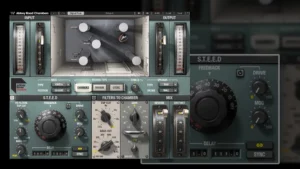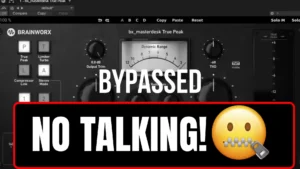
Table of Contents
How Do I Install a VST Plugin?
Installing a VST plugin might seem intimidating if you’re new to music production, but it’s simpler than you think. With a few steps, you can integrate powerful virtual instruments and effects into your workflow and elevate your music-making process. This guide will walk you through the process of installing VST plugins on your computer, whether you’re using Windows or macOS, and provide troubleshooting tips for common issues.
What Are VST Plugins?
Before diving into the installation process, let’s understand what VST plugins are and why they’re essential for music production.
Definition
VST (Virtual Studio Technology) plugins are software tools that expand the functionality of your Digital Audio Workstation (DAW). They come in three main types:
- Instruments (VSTi): Virtual synthesizers, pianos, drums, and more.
- Effects: Tools like compressors, EQs, and reverbs.
- MIDI Effects: Chord generators, arpeggiators, and similar utilities.
Why Use VST Plugins?
- Add professional-quality sounds and effects to your projects.
- Replace costly hardware instruments and effects.
- Expand creative possibilities with endless customization.
Preparing to Install a VST Plugin
Step 1: Check Your System Requirements
Before downloading a plugin, ensure that your computer meets the system requirements provided by the plugin developer. These typically include:
- Operating System: Windows 10 or macOS 11 (or newer).
- Processor: Minimum dual-core CPU, but quad-core is recommended.
- RAM: At least 8GB, though 16GB or more is preferred for large plugins.
- Storage: Ensure sufficient disk space for the plugin and associated libraries.
Step 2: Choose a Compatible Plugin Format
Plugins are available in different formats, such as VST2, VST3, AU (for macOS), and AAX (for Pro Tools). Confirm that your DAW supports the format of the plugin you intend to install.
Step 3: Download the Plugin Installer
Visit the official website of the plugin developer to download the installer. Avoid downloading from third-party sources to prevent malware or unauthorized versions.
Installing VST Plugins on Windows
Step 1: Run the Installer
Double-click the downloaded file to launch the installer. Follow the on-screen instructions provided by the setup wizard.
Step 2: Choose the Installation Path
During the installation process, you’ll be prompted to select a directory for your VST plugins. Common paths include:
C:\Program Files\VSTPluginsC:\Program Files\Common Files\VST3
If your DAW uses a custom plugin folder, ensure the plugin is installed in that directory.
Step 3: Complete the Installation
Once installed, the plugin files (e.g., .dll or .vst3) will be placed in the selected directory.
Step 4: Configure Your DAW
- Open your DAW and go to the settings or preferences menu.
- Locate the “Plugin Manager” or equivalent section.
- Add the installation directory to the plugin search paths.
- Rescan or refresh the plugin list.
Installing VST Plugins on macOS
Step 1: Run the Installer
Double-click the .dmg or .pkg file to start the installation. Follow the prompts to proceed.
Step 2: Install the Plugin Files
By default, macOS plugins are installed in:
- VST Plugins:
/Library/Audio/Plug-Ins/VST - VST3 Plugins:
/Library/Audio/Plug-Ins/VST3 - AU Plugins:
/Library/Audio/Plug-Ins/Components
Step 3: Configure Your DAW
- Open your DAW and navigate to the plugin preferences.
- Verify that the plugin directory is included in the search paths.
- Rescan the plugin folder to ensure the new plugin is recognized.
Testing and Using Your Plugin
Step 1: Load the Plugin in Your DAW
After installation, create a new project or open an existing one in your DAW.
- For instruments, add the plugin as a virtual instrument on a MIDI track.
- For effects, load the plugin into an audio track’s effects chain.
Step 2: Verify Functionality
Check that the plugin works as expected by adjusting its parameters and playing sounds. Many plugins come with presets, which can help you quickly test their capabilities.
Troubleshooting Common Issues
1. Plugin Not Showing in DAW
- Ensure that the installation directory is correctly set in your DAW’s preferences.
- Verify that the plugin format is compatible with your DAW.
2. Plugin Crashes or Freezes
- Check for updates on the developer’s website.
- Ensure that your computer meets the plugin’s system requirements.
3. Authorization Problems
- Some plugins require activation through a license key or authorization software like iLok. Follow the instructions provided by the developer.
4. Missing Presets or Sounds
- Confirm that additional content, such as sample libraries, has been installed correctly.
FAQ
1. Can I install VST plugins on multiple computers?
Most licenses allow installation on two or more devices, but check the plugin’s End User License Agreement (EULA) for specifics.
2. Are there free VST plugins available?
Yes! Many developers offer free plugins with great features. Examples include Spitfire LABS, Vital, and TAL-Reverb.
3. Can I install VST plugins on Linux?
While most VST plugins are designed for Windows and macOS, you can use tools like Wine or native Linux-compatible DAWs to run them on Linux.
4. How do I uninstall a VST plugin?
On Windows, use the Control Panel to uninstall. On macOS, delete the plugin files from the plugin directory.
5. Do I need an internet connection to use VST plugins?
An internet connection is typically needed for downloading, installing, and activating plugins but not for regular use.
Conclusion
Installing a VST plugin is a straightforward process that opens up a world of creative possibilities. By following this guide, you can ensure a smooth installation and setup experience. Whether you’re enhancing your tracks with powerful effects or creating melodies with virtual instruments, VST plugins are indispensable tools in modern music production.
Take the time to explore and experiment with your plugins—you’re now ready to create professional-quality music!
Find My Labels, find Record Label Send Your Demo | findmylabels.com |
SM Mastering | Mix & Master Services smmastering.com










